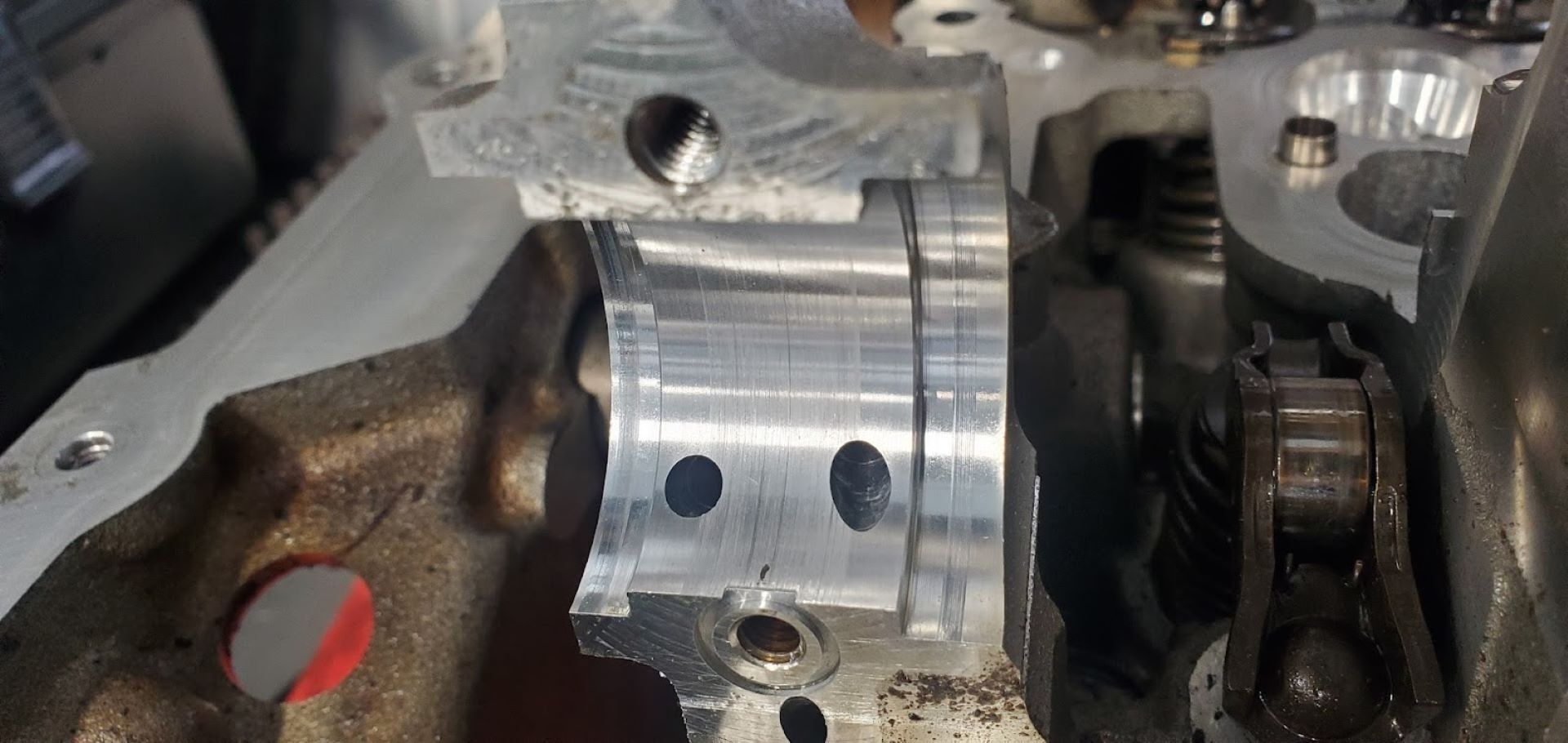Camshaft bearings play a crucial role in keeping your engine running smoothly. They ensure the camshaft rotates without friction, maintaining precise valve timing and overall engine performance. When these bearings wear out, it can lead to poor power delivery, increased oil consumption, and even catastrophic engine failure. Using precision boring tools is the best way to restore worn bearings, ensuring proper alignment and extending your engine’s lifespan.
Camshaft bearings endure constant stress from engine heat, high RPMs, and metal-to-metal contact. Over time, this stress leads to wear and tear, which can cause:
Scoring or pitting: Often caused by contaminated oil or debris.
Misalignment: Uneven wear disrupts the camshaft’s rotation.
Oil starvation: Leads to overheating and faster wear.
Common Causes of Wear:
Poor lubrication or using low-quality oil.
Overheating due to cooling system failures.
Aggressive driving or putting excessive load on the engine.

Ignoring worn camshaft bearings can lead to serious engine damage. Here are some warning signs to watch for:
Loud tapping or knocking noises coming from the engine.
Low oil pressure warnings on the dashboard.
Metal shavings in the oil (visible during oil changes).
Reduced power or irregular valve timing.
When to Take Action:
During engine rebuilds or major servicing.
If unusual noises persist even after an oil change.
Precision boring machines and alignment tools are essential for restoring worn bearings to their original specifications. These tools ensure:
Exact tolerances: Match OEM dimensions for a perfect fit.
Smooth surfaces: Remove microscopic imperfections.
Proper alignment: Maintain parallelism between the camshaft and crankshaft.
1. Disassemble the Engine
Remove the camshaft, timing components, and old bearings.
Clean the engine block thoroughly to remove debris and old oil residue.
2. Inspect and Measure
Use micrometers to check for wear on the bearing journals.
Inspect the engine block for warping or damage.
3. Bore the Bearing Journals
Mount the engine block on a precision boring machine.
Gradually bore the journals to the required diameter (follow OEM specifications).
4. Install New Bearings
Press-fit new bearings using an arbor press.
Ensure proper alignment using alignment pins or tools.
5. Reassemble and Test
Reinstall the camshaft and timing components.
Prime the oil system and perform a compression test to ensure everything is working correctly.

Skipping measurements: Always verify journal dimensions before boring.
Using low-quality bearings: Stick to OEM-grade bearings for durability.
Rushing alignment: Even a slight misalignment can lead to accelerated wear.
Prevent engine knock: Properly aligned bearings reduce vibration.
Extend engine life: Restores factory performance and longevity.
Save money: Avoids repeat repairs caused by improper machining.
Camshaft bearing wear might seem like a small issue, but its impact can be significant. By using precision boring tools and high-quality parts, you can restore your engine’s performance, prevent breakdowns, and ensure years of reliable operation.
Equip your shop with industrial-grade boring tools for flawless repairs. [Explore Our Tools] or contact our experts for tailored solutions!
Q: Can I replace camshaft bearings without boring?
A: No—worn journals need to be machined to fit new bearings properly.
Q: How long do camshaft bearings last?
A: Typically 150,000+ miles, but this depends on maintenance and driving habits.
Q: What causes premature bearing wear?
A: Dirty oil, overheating, or improper installation are common causes.
By mastering camshaft bearing repair, you can turn a worn-out engine into a reliable powerhouse. 🚗🔧💥
